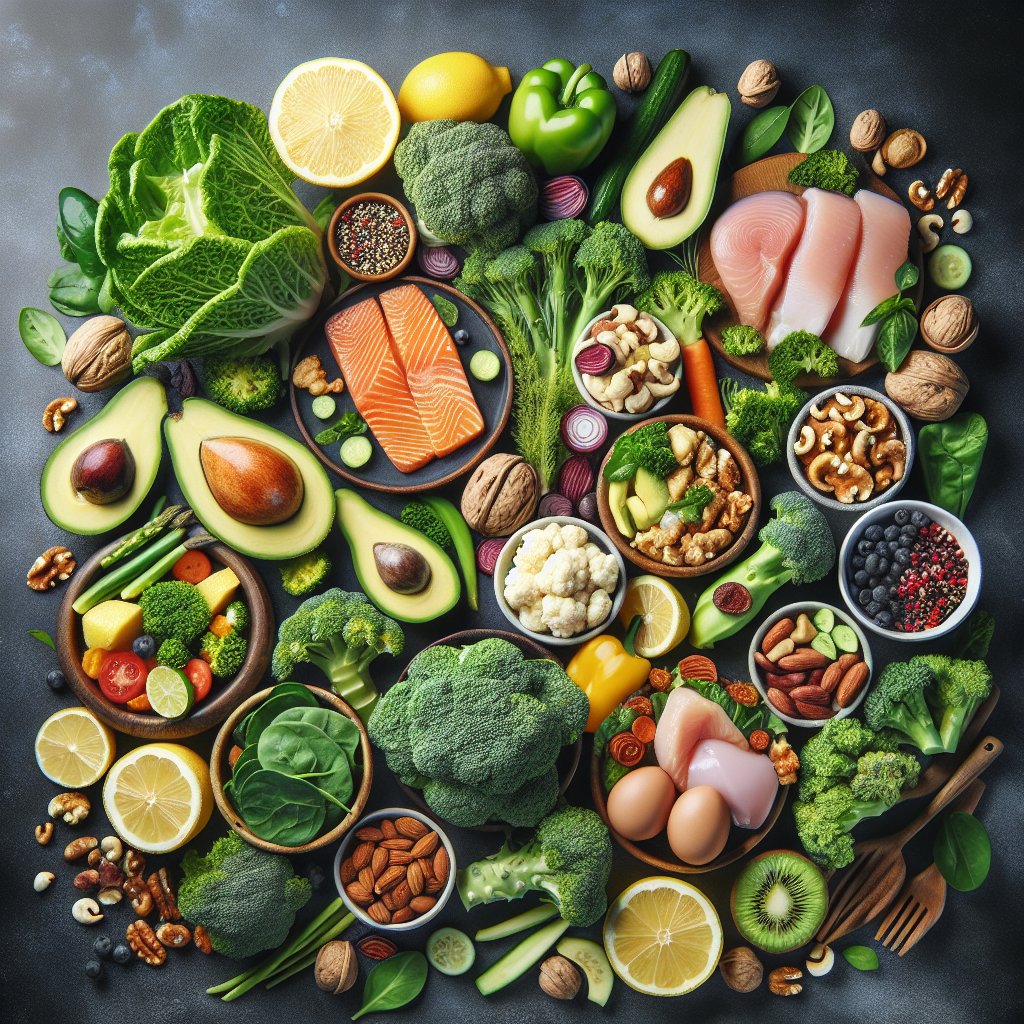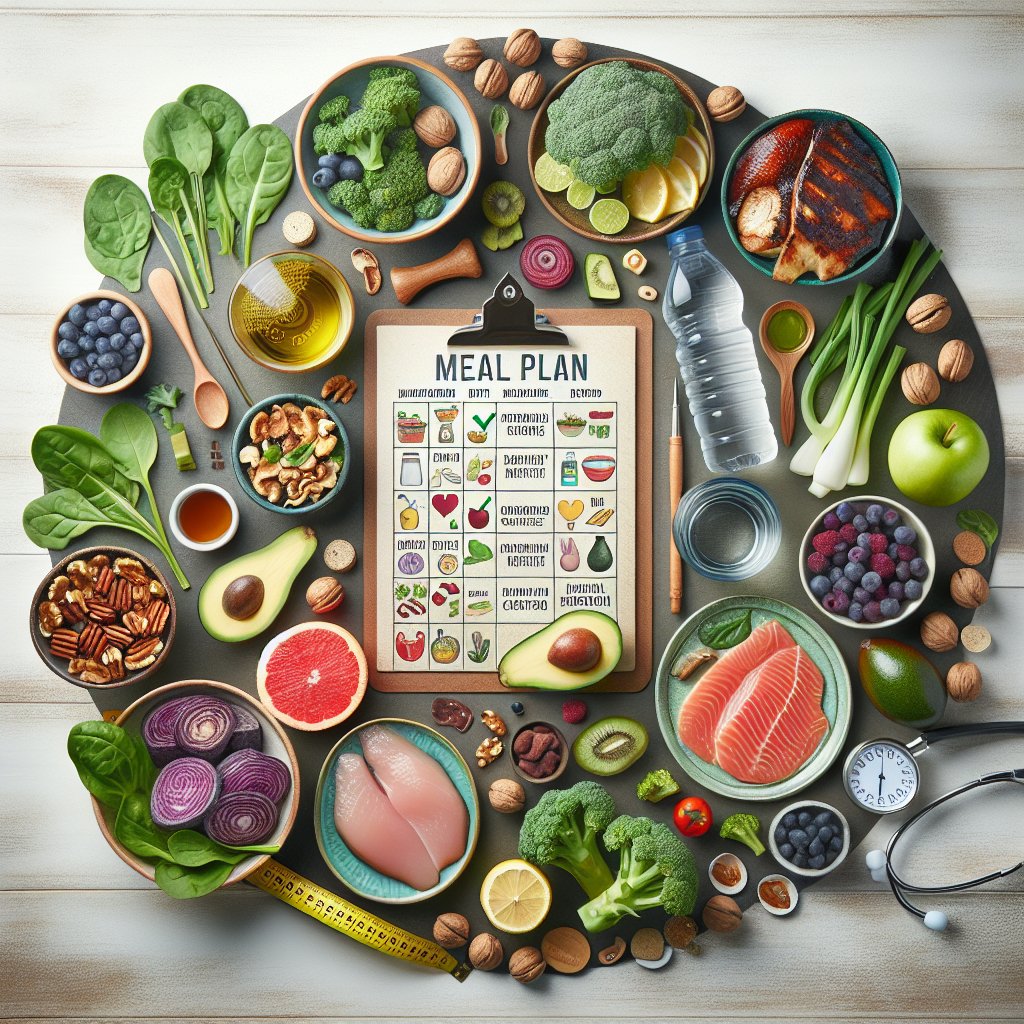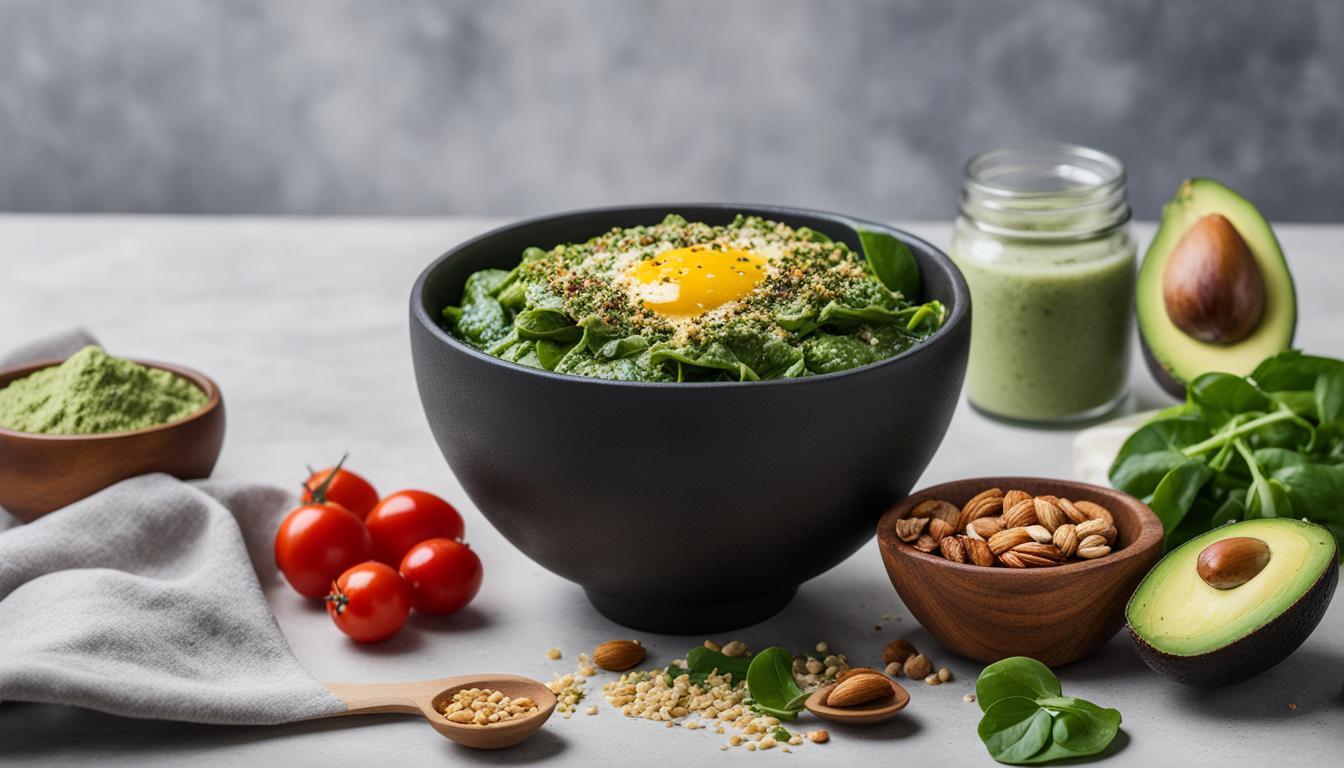Unlock the Secrets of the Keto Diet Plan: Benefits, Meal Planning, and More!
Brief Overview of the Keto Diet Plan: What Is It and Why Is It So Popular?
So, you’ve probably heard about the keto diet by now. It’s been all the rage in the health and wellness community lately, and for good reason. But what exactly is this keto diet plan that everyone is buzzing about?
The ketogenic diet, or keto diet, is a high-fat, low-carbohydrate eating plan that offers various health benefits. It involves drastically reducing your carbohydrate intake and replacing it with healthy fats, which puts your body in a metabolic state called ketosis. In this state, your body becomes incredibly efficient at burning fat for energy.
But why has the keto diet gained so much popularity? Well, for one, it has been shown to be incredibly effective for weight loss, which is a major reason why so many people are drawn to it. Additionally, the keto diet has been linked to numerous other health benefits, including improved blood sugar control, enhanced mental clarity, and increased energy levels.
Research also suggests that the keto diet may have potential therapeutic benefits for conditions such as epilepsy, Alzheimer’s disease, and even certain types of cancer. With all these potential advantages, it’s no wonder that the keto diet has become a hot topic of conversation.

Exploring the Health Benefits and Weight Loss Potential of a Keto Diet Plan
So, you’ve heard about the keto diet, and you’re curious about what it can do for your health and weight loss goals. Let’s delve into the numerous benefits of a keto diet plan, supported by scientific research.
Weight Loss Potential
One of the most exciting aspects of a keto diet plan is its potential for weight loss. The diet works by shifting your body’s metabolism from burning glucose to burning stored fat for energy, leading to a state called ketosis. According to a study published in the Journal of Clinical Endocrinology & Metabolism, individuals on a ketogenic diet experienced greater weight loss compared to those on a low-fat diet over a 12-month period. This shift in metabolism can lead to a significant reduction in body weight, particularly visceral fat, which is linked to many health risks.
Health Benefits
Besides weight loss, a keto diet plan has been linked to various health benefits. Research published in the European Journal of Clinical Nutrition suggests that the keto diet may improve cardiovascular risk factors such as body weight, blood pressure, and lipid profiles. Additionally, the diet has shown promise in improving insulin sensitivity, making it beneficial for individuals with type 2 diabetes or those at risk for developing the condition.
Furthermore, some studies indicate that a keto diet plan may have neuroprotective benefits, potentially aiding in the management of conditions like Alzheimer’s disease and epilepsy.
So, not only can a keto diet plan assist in shedding those extra pounds, but it may also support overall health and well-being.
Detailing the Macronutrient Breakdown and Food Choices for the Keto Diet Plan
So, you’re intrigued by the keto diet, and you want to unlock its secrets? Let’s dive right in! The key principles of a keto diet plan revolve around the macronutrient breakdown – that’s the balance of fat, protein, and carbohydrates you consume. The typical breakdown for a keto diet is about 70-75% of calories from fat, 20-25% from protein, and 5-10% from carbohydrates. This high-fat, moderate-protein, and low-carb approach helps your body enter a state of ketosis, where it burns fat for fuel instead of glucose.
Fats
On a keto diet, healthy fats should be the centerpiece of your meals. Opt for sources such as avocados, nuts and seeds, coconut oil, olive oil, and fatty fish like salmon. These fats are not only delicious but also provide the energy you need to thrive on a keto diet.
Proteins
Proteins play a crucial role in maintaining and repairing your body. However, on a keto diet, it’s essential to avoid excessive protein, as overconsumption can kick your body out of ketosis. Choose protein sources like grass-fed beef, free-range poultry, eggs, and high-fat dairy products like cheese and Greek yogurt in moderation.
Carbohydrates
When it comes to carbohydrates, focus on consuming mainly low-carb vegetables such as leafy greens, cauliflower, zucchini, and bell peppers. These veggies are packed with fiber and essential nutrients, while keeping your carb intake in check.
It’s also crucial to be mindful of hidden carbs in certain foods. Always check labels and be aware that even healthy foods like fruits can contain substantial amounts of carbs. With a bit of planning, you can navigate through the world of carbs and create a diverse and satisfying keto-friendly menu.
Incorporating these macronutrient principles into your keto diet plan can set you up for success on your ketogenic journey. Next, let’s talk about the benefits of a keto diet and how it can positively impact your overall well-being.
Listing Keto-Friendly Foods for a Successful Meal Plan
When it comes to following a keto diet plan, choosing the right foods is essential for success. The ketogenic diet focuses on low-carb, high-fat foods that help the body enter a state of ketosis, where it burns fat for fuel instead of glucose. Let’s explore some of the top keto-friendly foods to include in your meal plan:
1. Healthy Fats
Healthy fats are the cornerstone of a keto diet. These include avocados, coconut oil, olive oil, and grass-fed butter. Incorporating these healthy fats into your meals not only adds flavor but also helps keep you feeling full and satisfied.
2. Low-Carb Vegetables
Non-starchy vegetables are packed with essential nutrients and are low in carbohydrates, making them perfect for a keto meal plan. Examples include leafy greens, bell peppers, broccoli, and zucchini. These colorful veggies provide fiber and help keep your net carb intake low.
3. High-Quality Protein
Opt for protein sources such as grass-fed beef, free-range poultry, and fatty fish like salmon and sardines. Protein is crucial for muscle maintenance and overall health, and the right sources can also contribute to your fat intake.
4. Nuts and Seeds
Nuts and seeds like almonds, walnuts, and chia seeds are excellent sources of healthy fats and protein. They make for convenient and satisfying snacks or can be added to salads and other dishes to boost the nutrient content.
5. Dairy Products
Fermented dairy products like Greek yogurt, cheese, and cottage cheese can be included in moderation in a keto meal plan. These provide calcium, protein, and healthy fats, but it’s vital to be mindful of their carb content.
6. Berries
When it comes to fruits, opt for lower-carb options such as berries. Blueberries, raspberries, and strawberries are rich in antioxidants and fiber while being lower in sugar compared to other fruits, making them suitable for a keto diet in controlled portions.
By incorporating a variety of these keto-friendly foods into your meal plan, you can create delicious and satisfying dishes while staying within the macronutrient ratios of a ketogenic diet.

Identifying Foods to Steer Clear of on a Keto Diet
When you’re following a keto diet plan, it’s essential to be mindful of the foods you consume. The keto diet, short for ketogenic diet, is a low-carb, high-fat eating plan that offers various health benefits, including weight loss and improved metabolic health. To make the most of this dietary approach, it’s crucial to understand which foods to avoid in order to stay in a state of ketosis.
Avoid These High-Carb Foods
One of the fundamental principles of a keto diet plan is to drastically reduce your carb intake. This means steering clear of high-carb foods such as grains, sugar, and starchy vegetables. Avoid items like bread, pasta, rice, and potatoes, as these are high in carbohydrates and can hinder your body’s ability to enter ketosis. Instead, opt for low-carb alternatives like cauliflower rice, zucchini noodles, and almond flour products.
Steer Clear of Sugary Treats
It’s no surprise that sugary treats are a no-go on a keto diet plan. While indulging in desserts and sweets may be tempting, these foods can significantly spike blood sugar levels and take you out of ketosis. Be mindful of avoiding candies, pastries, and other sugary snacks. If you have a sweet tooth, you can satisfy your cravings with keto-friendly sweeteners like stevia, erythritol, or monk fruit to create delicious, guilt-free treats.
Avoid Certain Fruits
Fruits are typically touted as a healthy food choice, but some are relatively high in sugar and can impede ketosis. While you can enjoy small portions of berries such as strawberries, blackberries, and raspberries, it’s best to steer clear of high-sugar fruits like bananas, grapes, and mangos. These fruits contain a higher amount of natural sugars, which can hinder the ketogenic process.
By being mindful of high-carb foods, sugary treats, and certain fruits, you can better adhere to your keto diet plan and maximize its benefits for your overall health and well-being. Remember, success on a keto diet comes not only from knowing what to eat but also from being aware of what to avoid.
Meal Planning and Recipes: Tips for Meal Prepping and Delicious Keto Recipes
Meal prepping is an essential part of a successful keto diet plan. It not only saves time during the busy weekdays but also ensures that you stay on track with your macros and avoid making unhealthy food choices. Here are some tips for effective meal prepping and some delicious keto recipes to try:
Meal Prepping Tips:
1. Plan Your Meals: Take some time at the beginning of each week to plan your meals. Look for recipes that are simple, versatile, and can be easily packed for lunches or quick dinners.
2. Focus on Protein and Healthy Fats: Build your meals around a protein source such as chicken, turkey, or tofu and incorporate healthy fats like avocados, olive oil, and nuts to keep you full and satisfied.
3. Keep it Simple: Don’t feel the need to prepare extravagant meals. Sometimes, a combination of protein, vegetables, and a good sauce or dressing can make a delicious and keto-friendly meal.
Delicious Keto Recipes to Try:
1. Keto-Friendly Chicken and Vegetable Skewers: Marinate chunks of chicken and colorful vegetables in olive oil, lemon juice, and your choice of herbs. Skewer them and grill for a flavorful and healthy meal.
2. Zucchini Noodles with Pesto and Cherry Tomatoes: Use a spiralizer to create zucchini noodles, then toss them with homemade or store-bought pesto and halved cherry tomatoes for a refreshing and carb-conscious pasta alternative.
3. Keto Cauliflower Fried Rice: Pulse cauliflower in a food processor to create rice-sized pieces. Sauté with eggs, diced vegetables, and a splash of soy sauce for a low-carb version of this takeout favorite.
By incorporating these meal prepping tips and trying out these delicious keto recipes, you can set yourself up for a week of successful and enjoyable keto meals!
Addressing Potential Side Effects and Safety Considerations
When embarking on a keto diet plan, it’s essential to be aware of potential side effects and safety considerations to ensure you are taking care of your body as you pursue your health goals. Research has shown that while the keto diet plan can have numerous benefits, there are some potential risks and side effects that you should be mindful of. Let’s explore these and discuss how to address and navigate them.
Potential Side Effects of the Keto Diet Plan
Switching to a keto diet plan can lead to what is commonly known as the “keto flu.” It is a temporary phase where you may experience symptoms such as fatigue, dizziness, sugar cravings, irritability, and difficulty focusing. However, it’s essential to note that these symptoms typically subside within a week as your body adjusts to using fat for fuel instead of carbohydrates.
Moreover, some individuals may experience digestive issues when starting the keto diet plan. This can include constipation, as the significant reduction in carbohydrates can impact bowel movements. To address this, it’s crucial to stay well-hydrated, consume an adequate amount of non-starchy vegetables, and consider incorporating sources of healthy fats and fiber into your meals to support digestion.
Safety Considerations
While the keto diet plan is generally considered safe for most people, there are certain groups who should approach it with caution, such as individuals with existing medical conditions like diabetes or those who are pregnant or breastfeeding. Consulting with a healthcare professional before making significant dietary changes is always recommended, especially for these groups.
Additionally, it’s important to prioritize nutrient-dense foods on a keto diet plan to ensure you are meeting your body’s essential nutrient requirements. Research indicates that some individuals may fall short in certain micronutrients, such as magnesium and potassium, when following a keto diet. Incorporating foods rich in these nutrients, such as leafy greens, nuts, and seeds, can help mitigate any potential deficiencies.
In conclusion, while the keto diet plan can offer numerous benefits, it’s crucial to be mindful of potential side effects and safety considerations. By understanding these factors and taking proactive steps to address them, you can navigate the keto journey with confidence and prioritize your overall well-being.

Implementing Exercise with a Keto Diet Plan
So, you’ve decided to embark on a keto journey – congratulations! You’re about to discover a whole new world of delicious, satisfying, and energizing foods. But what about exercise? How does physical activity fit into this new lifestyle? Let’s delve into the role of exercise in conjunction with a keto diet plan.
Benefits of Exercise on a Keto Diet
When you combine exercise with a keto diet plan, the benefits can be truly remarkable. Research has shown that regular physical activity can enhance the effects of a ketogenic diet. For example, a study published in the Journal of Physiology found that exercise increases the body’s ability to burn fat for fuel, which aligns perfectly with the goals of a keto diet.
Moreover, engaging in strength training and aerobic exercises while on a keto diet can help preserve lean body mass, boost metabolism, and improve overall physical and mental well-being. It’s a win-win situation!
Types of Exercises to Consider
So, what types of exercises should you consider incorporating into your keto lifestyle? Both aerobic exercises, such as brisk walking, running, or cycling, and strength training, like weightlifting or bodyweight exercises, can be incredibly beneficial.
Aerobic exercises can help enhance fat burning and cardiovascular health, while strength training can aid in maintaining and building muscle mass. High-intensity interval training (HIIT) is another fantastic option, as it has been shown to improve insulin sensitivity and boost fat burning, making it a great match for a keto lifestyle.
Remember, choosing activities that you genuinely enjoy and look forward to can make it easier to stick to a regular exercise routine, so don’t hesitate to try different types of exercises until you find what suits you best!
Tips for Success
As with any lifestyle change, incorporating exercise into your keto diet plan requires a bit of planning and dedication. Here are a few tips to help you succeed:
- Start Slow: If you’re new to exercise, start with low-impact activities and gradually increase the intensity as your fitness level improves.
- Stay Hydrated: Proper hydration is crucial, especially when following a keto diet and engaging in physical activity. Be sure to drink plenty of water throughout the day.
- Listen to Your Body: Pay attention to how your body responds to exercise. If you feel overly fatigued or experience discomfort, it’s okay to take a break or adjust your workout routine.
- Pair Exercise with Nutrition: Fueling your body with nutrient-dense, keto-friendly foods before and after exercise can help optimize your performance and recovery.
- Be Consistent: Set realistic goals and stick to a consistent workout schedule. Consistency is key when it comes to reaping the benefits of exercise on a keto diet plan.
By incorporating exercise into your keto lifestyle, you can amplify the positive effects of the diet and achieve a greater sense of well-being. Embrace the opportunity to move your body, strengthen your muscles, and elevate your overall health!
Now, you’re all set to embark on your keto journey with a newfound understanding of the role of exercise in conjunction with your diet plan. Get ready to experience the incredible synergy between delicious, nutritious meals and invigorating physical activity!
Guidance on Tracking Progress and Making Adjustments
Congratulations on starting your keto journey! Now that you have embarked on this amazing keto diet plan, it’s essential to monitor your progress and make necessary adjustments along the way. Tracking your success and making tweaks can help ensure that you stay on the right path to achieving your health and wellness goals.
Measuring Success
One of the most important aspects of monitoring your progress on the keto diet plan is to measure your success effectively. While weight loss is a common goal, there are other metrics to consider. Tracking changes in body measurements, energy levels, mental clarity, and even improvements in skin health can be significant indicators of progress.
Scientific studies have shown that a ketogenic diet can lead to significant weight loss and improvements in various health markers. For example, a study published in the European Journal of Clinical Nutrition found that participants following a ketogenic diet experienced greater weight loss and reductions in BMI compared to those on a low-fat diet.
Adjusting Along the Way
As you progress on your keto journey, don’t be afraid to make adjustments to your diet and lifestyle to optimize your results. It’s crucial to listen to your body and make changes as needed. Keep in mind that everyone’s body responds differently to dietary changes, so what works for one person may not work the same for another.
Research published in the Journal of Physiology suggests that individual responses to a ketogenic diet can vary based on factors such as metabolic rate, hormone levels, and genetic predispositions. This emphasizes the need to make personalized adjustments to achieve the best results.
Remember, the keto diet plan is not about perfection; it’s about progress. By staying mindful of your body’s signals and consistently tracking your progress, you’ll be in a better position to make the necessary adjustments to optimize your success on the keto journey.
Conclusion: Unlocking the Secrets of the Keto Diet Plan
After diving deep into the world of the ketogenic diet, it’s clear that this approach to eating offers a multitude of impressive benefits. From promoting weight loss and improving metabolic health to enhancing mental clarity and focus, the keto diet plan has gained popularity for good reason. However, it’s important to remember that each person’s body is unique, and what works for one individual may not work for another. As with any lifestyle change, consulting a healthcare professional before starting a new diet plan is crucial.
Exploring the keto diet plan is not just about what you eat, but it’s also about understanding the science behind it. The process of ketosis, where the body uses fat for fuel instead of carbohydrates, is fascinating and has been backed by scientific research. Studies have shown that the keto diet can be effective in reducing body weight, lowering blood sugar levels, and even improving heart health.
Further Exploration and Personalized Approach
For those intrigued by the keto diet plan, there is a plethora of resources available for further exploration. From reputable websites and books to social media communities and support groups, there is no shortage of information and inspiration. With a personalized approach and the right guidance, individuals can tailor the keto diet plan to their specific needs and preferences.
Exploring various keto-friendly meal plans, recipes, and creative cooking techniques can make the journey enjoyable and sustainable. Additionally, hearing success stories and experiences from others who have embraced the keto lifestyle can provide motivation and valuable insights. It’s essential to approach the keto diet plan with an open mind, a willingness to learn, and a focus on overall well-being.
Embracing the Journey
Embarking on the keto diet plan is not just about reaching a specific number on the scale; it’s about embracing a journey towards a healthier and more balanced lifestyle. As with any significant change, there may be challenges along the way, but staying informed, being patient, and making adjustments when necessary can lead to long-term success.
Remember, the keto diet plan is not just a trend but a lifestyle choice that encompasses mindful eating, nourishing the body, and prioritizing health. With the right knowledge, support, and a positive attitude, anyone can unlock the secrets of the keto diet plan and experience its remarkable benefits.


